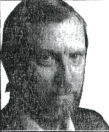| |
Myrtle Hawes recalls when word was received in Seadrift that Col. Edwin Hugh Hawes had been killed in action. had been killed in action.
A brother of her husband, William Calhoun Hawes, Col. Hawes was piloting a B-25 Mitchell bomber on a low-level bomb run against a Japanese carrier in Beppu Bay when he became one of the last Americans to die in World War II. "An aunt in San Antonio called that she had received word," Mrs. Hawes recalls, "and my husband took off to tell their brother, B.C., what had happened. At the same tline the church bells began to ring and people were honking their car horns.
"Peace had been announced."
Hawes was killed just five days before the Japanese surrendered and on the same day that the Japanese city of Nagasaki was destroyed by an atomic bomb less than 200 miles away.
Mrs. Hawes still has a faded newspaper clipping from the Wednesday evening, Sept. 5, 1945, Fort Worth Star-Telegram that her husband carried for years in his billfold about his brother's heroic death. He had it with him when he died in a private plane crash in April, 1959, in Espiritu Santo Bay.
The news dispatch written by Sam Kinch, the Star-Telegram's correspondent in the Pacific Theater, noted that Hawes was piloting the lead plane in a 12-ship attack on a Japanese escort carrier, the first time that B-25s had undertaken any naval craft so big.
The carrier had been camouflaged with netting and "real tree limbs" to resemble a small island. "Hawes roared down on top of the carrier, his eight wing guns blazing," Kinch wrote. "He dived right for the deck ("He wanted to get that carrier so bad," a flier in a later element said). But a limb from one of the camouflage trees must have caught a wing tip. Hawes' plane flipped over, flew a short distance upside down, then crashed into the water."
At the time, Hawes was 34 years old and had been in the Air Force for 10 years with 4,700 hours of flying time, nearly 1,000 in combat.
The son of Ed and Mary Hawes, who ranched at Salt Creek near Tivoli, Hawes had attended Victoria Junior College, as Victoria College was then known, and had taught math and coached tennis and basketball for a year or two in Seadrift. He was ranching on Matagorda Island before joining the Army Air Corps in 1935.
|
|
 |
Henry's
Journal
|
|
|
Henry
Wolff Jr.
|
While in the service he married the former Evelyn Louise Criss of Gridley, Kan., now Louise Hawes Tlirogmorton of Emporia, Kan., and they had two sons, Edwin and Jeffrey, who were six and one years old, respectively, at the time their father died.
Hawes' sister is Mrs. Glenn "Lurline" Cunningham of Sea-drift.
In 1990, Hawes was posthumously awarded a Silver Star for gallantry, it being accepted in ceremonies at McConnell Air Force Base by Edwin Hawes III on behalf of his grandfather, the honor having been overlooked in the confusion at the end of the war, although Hawes had previously been awarded the Distinguished Flying Cross, the Bronze Star for valor, two air medals, and three Purple Hearts.
He received one of the purple hearts when he made news for being the only bomber pilot to be wounded by a land mine. He was flying so low that the bullets from his B-25's machine gun hit the mine, causing it to explode. The explosion ripped off the plane's nose and tore open the windshield. While blinded by the blood from head wounds, Hawes managed to fly the plane back to his base.
He had served as a pilot, instructor in San Antonio and had 16 months in the Caribbean on antisubmarine patrol before being assigned to the 38th Bombardment Wing in the Pacific where he had become its commander by the time it got to Okinawa.
The Sun Setters squadron, as his group had became known for its low-level flying, was also called "Hawes' Alcohol Busters," according to Kinch, who noted that they had destroyed 90 per cent of the alcohol production plants on Formosa.
By the morning of Aug. 9, 1945, when he was told that the Japanese aircraft carrier Kaiyo had been! sighted in Beppu Bay, on the Japanese island of Kyushu, he had al-. ready had orders to go home, but' did not want his pilots to fly the. dangerous mission without his leadership. He signed on before anyone asked for volunteers. Hawes had dropped two 1,000-pound bombs on the left side of the! carrier before his plane spun out of control and he went down, one of the heroes of World War II.
In every sense of the word.
|
|